Illustrated books are more than just colorful pages with pretty pictures. They are important for helping children learn and grow. When you read an illustrated book with your child, you’re not just telling a story. You’re helping them explore a world of imagination and learning.
These books make it easier for kids to understand new ideas because the pictures show what the words mean. This helps them learn faster and remember things better. Plus, looking at pictures and listening to the story at the same time engages their senses, making the reading experience more exciting and memorable.
Reading illustrated books together also creates special bonding moments. It’s a time when you and your child can connect, laugh, and enjoy the story together. This not only brings you closer but also helps your child develop a love for reading and learning.
So, by choosing illustrated books, you’re not just giving your child a fun story. You’re helping them learn, grow, and develop important skills that will benefit them throughout their lives.
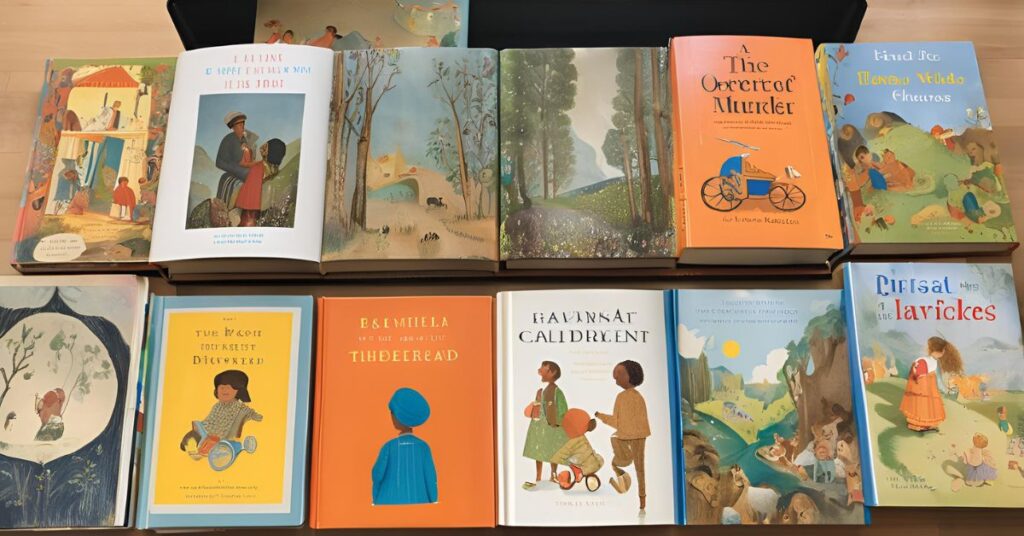
Visual Engagement and Learning
Illustrations in children’s books are important because they grab kids’ attention and help them understand the story. Bright and detailed pictures are like magic for young minds. They make it easier for children to follow along, even if they can’t read. When children look at these pictures, they start thinking about what they see, which helps their brains grow and develop.
These images aren’t just pretty to look at they play a big role in learning. They help children connect words to pictures, making it easier to remember new words and ideas. The more they look and think, the more their imagination and creativity grow. This visual engagement is vital because it keeps children interested and makes learning fun.
Our Children’s Books Collection is filled with beautifully illustrated books designed to captivate and educate. Each book is a treasure trove of bright, engaging images that spark curiosity and creativity in young readers. By providing your child with these illustrated books, you’re giving them a wonderful tool to help their minds develop and thrive.
Vocabulary and Language Skills
Illustrated books are wonderful for helping children learn new words and improve their language skills. When children look at pictures in these books and hear the words that describe them, they make connections between what they see and what they hear. This connection between images and words helps them understand the meaning of words more clearly and remember them better.
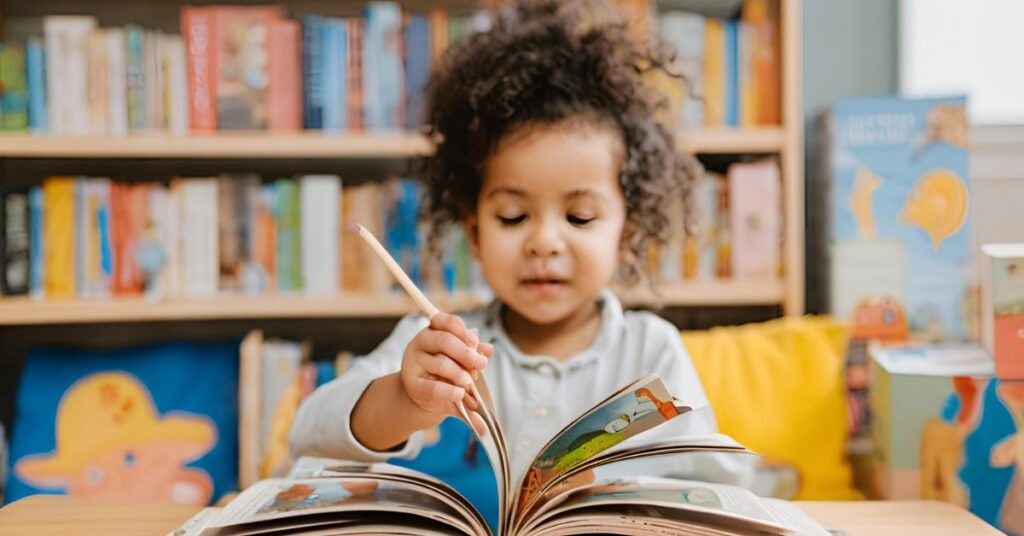
Moreover, when parents or caregivers talk about the pictures with children, it encourages them to describe what they see and share their thoughts. This practice not only enhances their ability to express themselves but also boosts their confidence in using language effectively. Illustrated books thus play a crucial role in building a strong foundation for children’s vocabulary and language development.
Emotional and Social Development
Illustrated books are essential for nurturing children’s emotional and social development. Through vibrant illustrations, these books vividly portray characters experiencing a spectrum of emotions—joy, sadness, anger, and love—within relatable everyday scenarios. This visual storytelling not only captivates young readers but also serves as a powerful tool for teaching empathy. Children learn to understand and relate to the feelings of others, enhancing their social awareness and interpersonal skills.
Moreover, these stories provide valuable opportunities for children to explore and express their own emotions. By seeing how characters in the books handle different feelings, children learn strategies for managing their emotions in real-life situations. This emotional literacy is fundamental for building resilience and forming healthy relationships as they grow.
Key Points for Children’s Emotional Development
- Empathy Development: Illustrated books help children understand and relate to the emotions of characters, fostering empathy and compassion.
- Social Awareness: By observing social interactions in stories, children learn about relationships and social cues.
- Emotional Expression: These books provide a safe space for children to explore and express their feelings.
- Life Skills: Children learn practical strategies for managing emotions and handling different social situations.
In essence, illustrated books go beyond mere entertainment; they enrich children’s lives by fostering empathy, emotional intelligence, and social competence through engaging visual narratives. By incorporating these books into their reading routine, parents can actively support their child’s holistic development, nurturing both heart and mind.
Encouraging Imagination and Creativity
Illustrated books are like enchanted windows that open up colorful worlds for children to explore. When kids dive into these pages filled with lively images, they embark on exciting journeys of imagination. They envision themselves as brave adventurers, clever inventors, or even friendly animals in far-off lands. This imaginative playtime is more than just fun—it’s essential for their growing minds. It helps them develop the ability to think creatively, solve problems creatively, and understand new ideas.
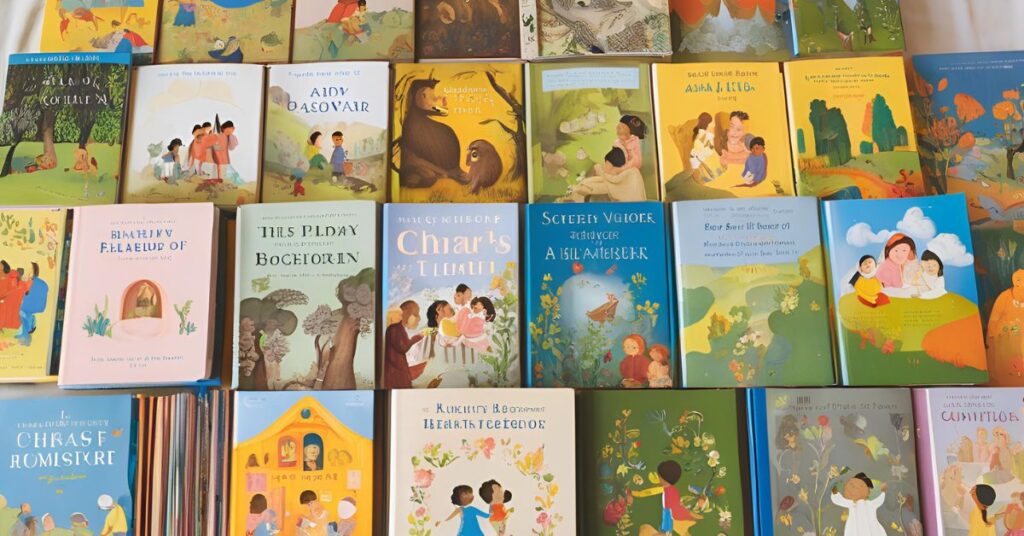
How to Encourage Imagination and Creativity
- Choose Diverse Books: Pick books with a variety of themes, characters, and settings to broaden their imagination.
- Ask Open-Ended Questions: Encourage your child to think beyond the story by asking questions like “What do you think happens next?” or “How would you solve this problem?“
- Create a Story Together: Start a story and take turns adding to it. Let your child contribute their ideas and see where their imagination takes the tale.
- Engage in Pretend Play: Encourage role-playing based on their favorite book characters or settings. This helps them explore different roles and scenarios.
- Explore Nature and Outdoors: Nature sparks creativity. Take walks, explore parks, or simply play outside to inspire new ideas and observations.
- Provide Art Supplies: Let them draw, paint, or create crafts inspired by their favorite stories. This hands-on creativity reinforces imaginative thinking.
- Visit Museums and Cultural Sites: Exposing children to art, history, and different cultures expands their imagination and sparks curiosity.
By incorporating these activities into your daily routine, you can foster a love for creativity and storytelling in your child, all while enjoying the magical world of illustrated books together.
Enhancing Concentration and Attention
Illustrated books are fantastic for helping children improve their ability to concentrate and pay attention. When children sit down with a book that’s full of colorful pictures, they’re drawn into the story. They spend time looking closely at each illustration, which helps them stay focused. This skill of paying attention is really important for doing well in school and everyday activities. It’s like giving their brains a workout, teaching them how to stay focused and absorb information better. So, reading illustrated books isn’t just fun—it’s also a great way to help your child become better at focusing and learning!
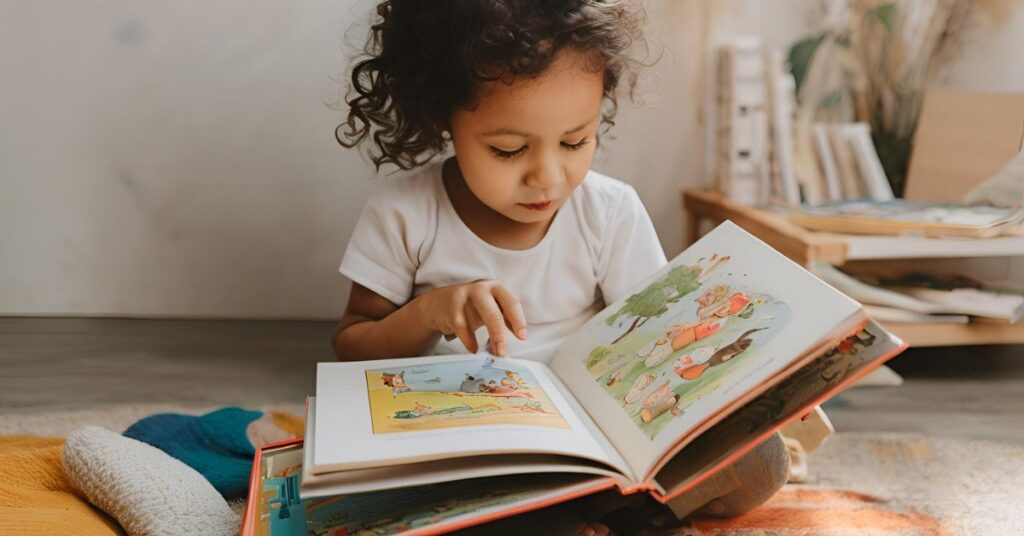
How Illustrated Books Help Day-to-Day Life for Children
- Better Test Performance: By practicing concentration with illustrated books, children can improve their ability to focus during tests and exams.
- Improved Playground Skills: Concentration skills learned from reading can also help children focus better during playtime, helping them learn new games and activities more quickly.
- Enhanced Problem-Solving: Engaging with the stories and pictures in illustrated books encourages children to think creatively and solve problems, which can be useful both in academic settings and during play.
- Building Confidence: Successfully focusing on a story and understanding it can boost a child’s confidence in their ability to learn and understand new things, whether in the classroom or on the playground.
Bonding Time for Children and Parents
Many parents face the challenge of strengthening their bond with their children while also fostering a love for learning. One simple and effective solution is to read illustrated books together. These books, with their vibrant pictures and engaging stories, provide a perfect opportunity to connect deeply with your child.
As you sit together and explore the colorful pages, you create moments of closeness, trust, and shared joy. Your child feels secure and valued as you experience the stories together. This shared reading time not only strengthens the special bond between you but also lays a foundation for a lifelong love of books and learning.
Through these experiences, children learn not only about the world around them but also about emotions, relationships, and imagination. They begin to associate reading with positive feelings and cherished memories, setting the stage for a strong literacy foundation and a curiosity to explore new ideas.
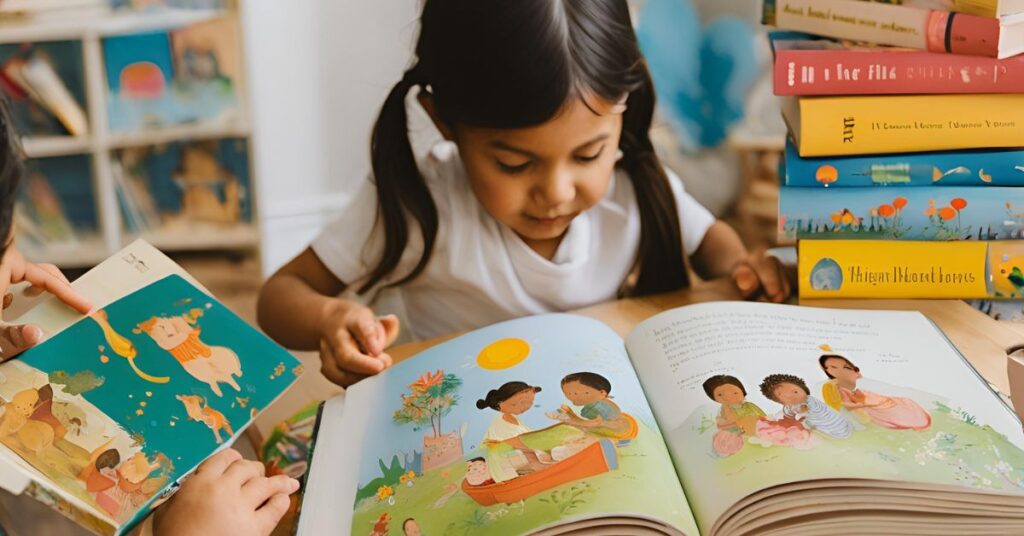
So, next time you’re looking to spend quality time with your child and nurture their development, pick up an illustrated book. It’s not just about reading. It’s about building precious memories and fostering a love for learning that will last a lifetime.
Featured Illustrated Books
Kyndleigh and Bamboo: Who Rescues Who? by Dr. Deborah Radzwill
In “Kyndleigh and Bamboo: Who Rescues Who?“, Bamboo, a lost kitten, finds himself alone and in need of help. Cold, hungry, and scared, he wanders through the woods searching for his beloved kitty Mommy. Along the way, Bamboo encounters various creatures—ants, birds, butterflies—who offer him companionship and support. Just when Bamboo is about to lose hope, he meets Kyndleigh, a kind-hearted girl whose gentle singing about the power of kindness touches Bamboo’s heart. Kyndleigh rescues Bamboo, promising him a life filled with warmth, cuddles, and care. Their newfound friendship blossoms into a beautiful bond that inspires them to spread kindness to everyone they meet. “Kyndleigh and Bamboo” teaches young readers about hope, friendship, and the transformative impact of kindness, regardless of age or background.
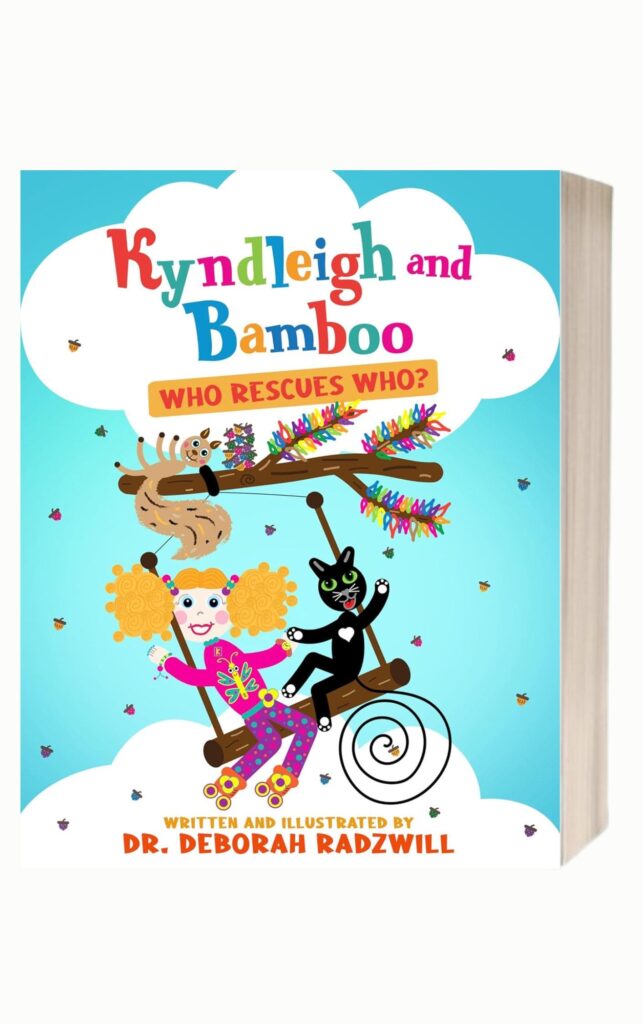
The Heart and the Bottle by Oliver Jeffers
“The Heart and the Bottle” tells the poignant story of a young girl whose world is filled with wonder and curiosity. She embraces life with boundless enthusiasm until a painful event causes her to retreat emotionally. In response to loss, she decides to protect her heart by locking it away in a safe place. However, as time passes, she realizes that her world has become dull and empty without her heart’s openness. Through introspection and the encouragement of those around her, she embarks on a journey to reclaim her heart and rediscover the joy of living fully. Oliver Jeffers delicately explores themes of love, loss, and resilience, reminding readers of all ages that even in the darkest moments, there is always hope and the possibility of healing.
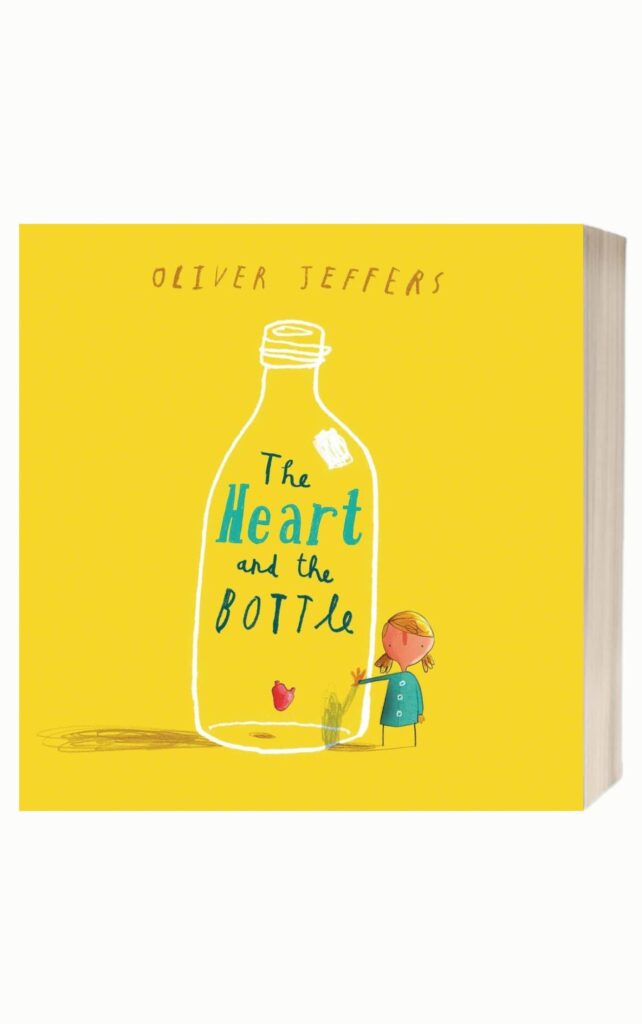
This Moose Belongs To Me by Oliver Jeffers
“This Moose Belongs to Me” is a whimsical and thought-provoking story by Oliver Jeffers in which Wilfred, a young boy, unexpectedly becomes the owner of a moose, whom he names Marcel. Wilfred is overjoyed to have Marcel as his companion and tries to teach him the rules of being a good pet. Marcel, who is mostly obedient, follows Wilfred’s guidance until one fateful day they encounter someone else claiming ownership of Marcel. This encounter challenges Wilfred’s notion of ownership and raises questions about friendship and belonging. With Jeffers’ distinctive blend of humor and insight, “This Moose Belongs to Me” invites readers to consider the nature of relationships and the meaning of ownership in a delightful, beautifully illustrated tale.
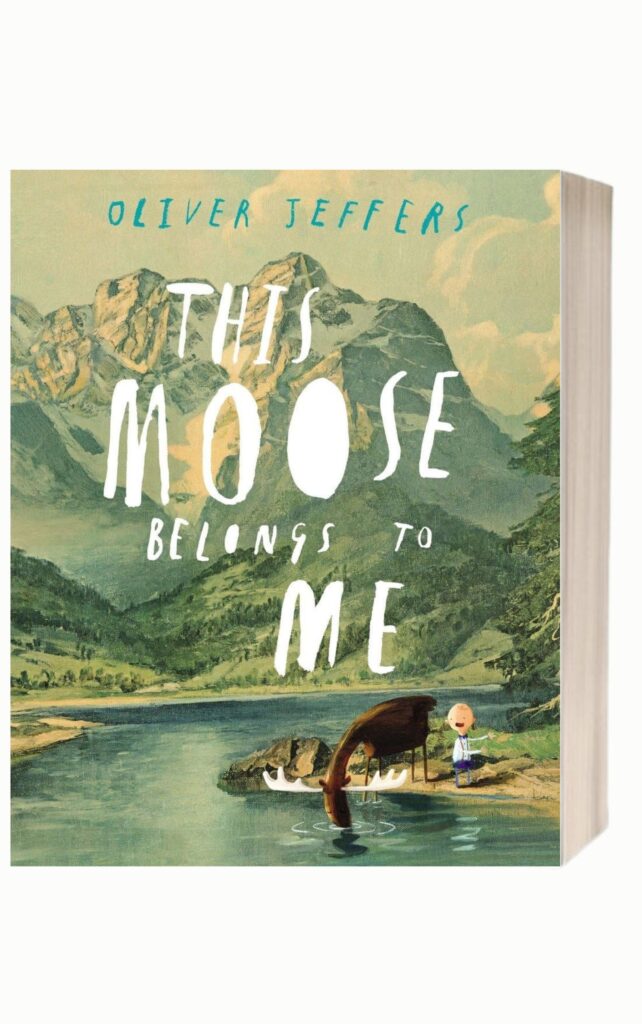
The Way Back Home by Oliver Jeffers
In “The Way Back Home,” a young boy discovers an unexpected adventure when he finds an airplane hidden in his cupboard. Eager to explore the skies, he takes off and experiences the thrill of flight until his plane suddenly runs out of fuel. Stranded on the moon, the boy faces the challenge of finding a way back home. Just when he begins to feel hopeless, he encounters another stranded creature—a Martian. Together, they navigate their fears and uncertainties, forging an unlikely friendship that transcends their differences. Oliver Jeffers weaves a tale of courage, friendship, and the boundless possibilities of imagination in this touching story. Through breathtaking illustrations and heartfelt storytelling, “The Way Back Home” captivates young readers and reminds them that adventures, even unexpected ones, can lead to remarkable discoveries.
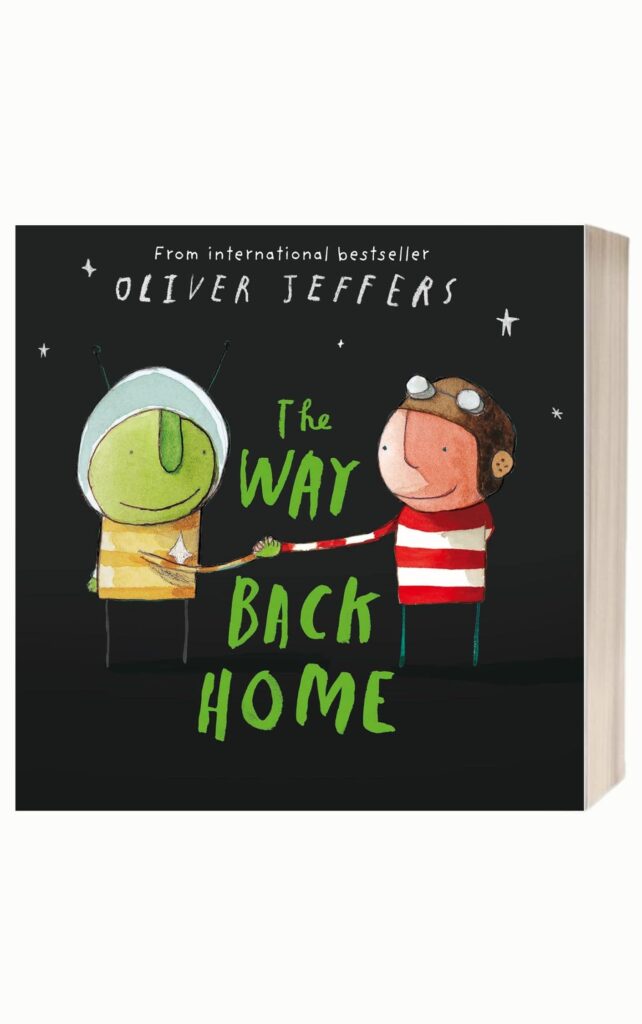
Virginia Wolf by Kyo Maclear
“Virginia Wolf” is a poignant and imaginative tale inspired by the lives of Virginia Woolf and her sister, Vanessa Bell. In this beautifully illustrated book, sisters Vanessa and Virginia navigate Virginia’s moods, which sometimes turn her into a wolf. Vanessa tries everything to cheer up her sister, from painting the walls in rainbow colors to finding special objects that bring joy. Through Vanessa’s love and creativity, she finds a way to lift Virginia’s spirits and restore brightness to their world. Kyo Maclear’s lyrical prose and Isabelle Arsenault’s stunning illustrations capture the essence of sisterly love and the power of creativity in overcoming sadness. “Virginia Wolf” is a touching story that encourages readers to embrace empathy, creativity, and the transformative magic of art.
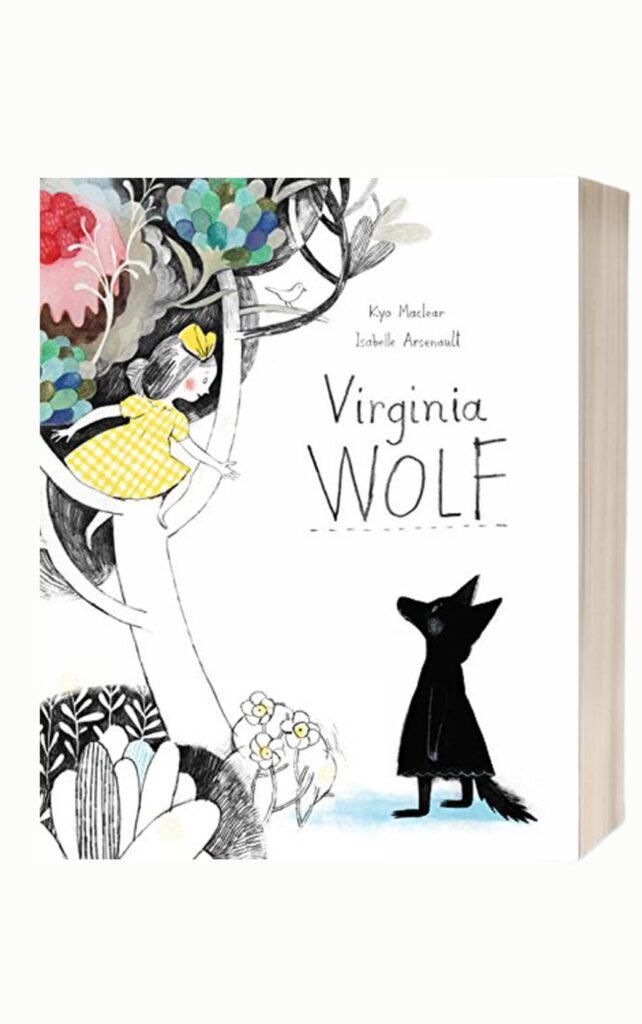
Why Illustrated Books Matter
Illustrated children’s books are more than just stories. They are gateways to imagination, empathy, and learning. Through vibrant images and engaging narratives, these books captivate young minds and inspire creativity. Each book featured in Heartsaysalot Children’s Books Collection offers not only entertainment but also valuable lessons about friendship, resilience, and the beauty of the world around us. Explore these captivating tales and more at Children’s Books Collection, where every story is an opportunity for children to explore, learn, and grow.
Conclusion
Illustrated children’s books are powerful tools for development. They provide visual stimulation, language growth, emotional understanding, and creative inspiration. By including these books in your child’s daily routine, you’re nurturing their mind, heart, and imagination. Explore our Children’s Books Collection and give your child the gift of learning and joy through the magic of illustrated stories.
FAQs About the Importance of Illustrated Books in Child Development
Why are illustrated books important for child development?
Illustrated books engage children visually, aiding in cognitive development, vocabulary building, and emotional understanding. They stimulate imagination and creativity while enhancing concentration and attention span.
At what age should I start reading illustrated books to my child?
You can start reading illustrated books to your child as early as infancy. Even babies benefit from looking at colorful pictures and listening to your voice as you describe what they see.
How do illustrated books help in language development?
Illustrated books help in language development by associating visual cues with spoken words. Children learn new vocabulary as they see images depicting objects, actions, and emotions, improving their language skills.
Can illustrated books improve my child’s academic performance?
Yes, illustrated books can improve academic performance by enhancing reading comprehension, vocabulary, and critical thinking skills. They also promote a love for reading, which is crucial for academic success.
What types of skills do children learn from reading illustrated books?
Children learn a variety of skills from reading illustrated books, including empathy, social skills, problem-solving, creativity, and concentration. They also develop an appreciation for art and storytelling.
Are there specific benefits of reading illustrated books for children with learning disabilities?
Illustrated books can be beneficial for children with learning disabilities by providing visual support that aids comprehension. The combination of pictures and text can make reading more accessible and enjoyable for these children.
How can parents make the most out of reading illustrated books with their children?
Parents can enhance the experience of reading illustrated books by asking open-ended questions about the story and illustrations, encouraging discussions about characters’ feelings, and relating the story to real-life experiences.
Are there recommended illustrated books for different age groups?
Yes, there are illustrated books tailored to different age groups, from infants to adolescents. Choosing books with age-appropriate content and engaging illustrations ensures that children remain interested and benefit from the reading experience.





